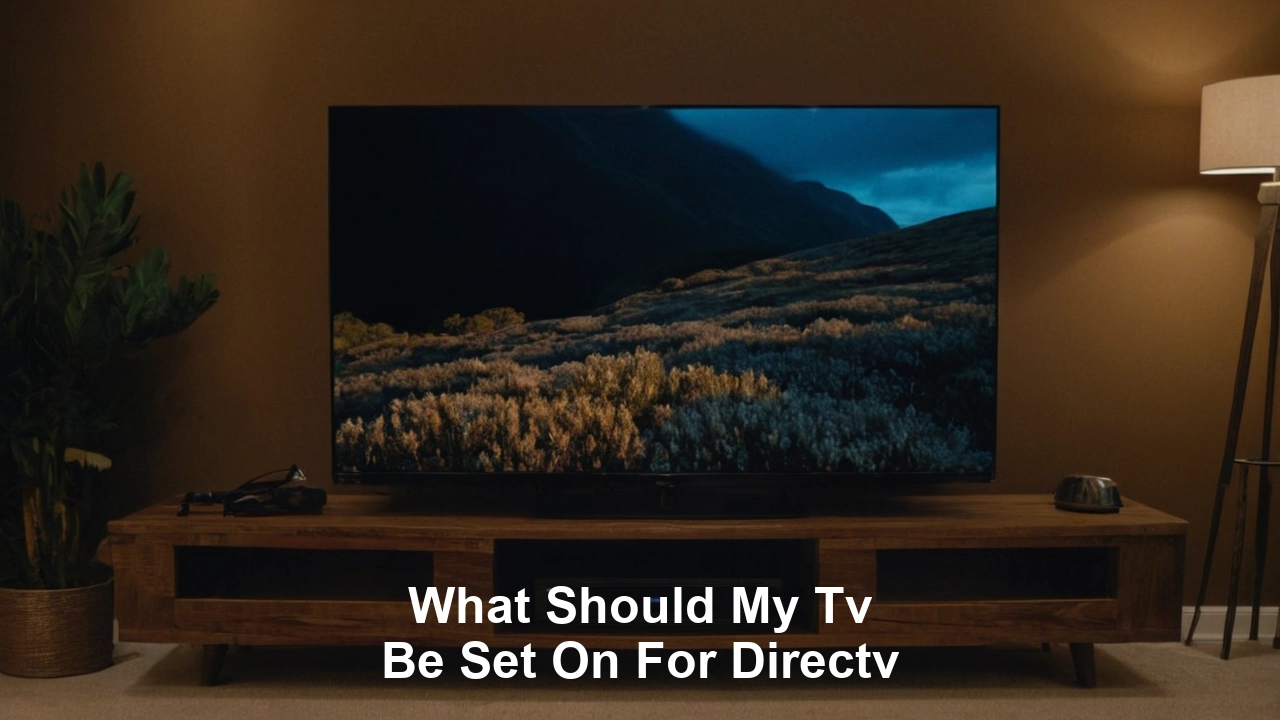What should my TV be set on for DIRECTV?
While going through the process of calibrating your television to get programs from DirecTV, there are some suggested picture settings that will be helpful. As for settings, it should be mentioned that they may be different for different makes and models of TVs, although there are some general tips.
Another important setting is choosing the appropriate TV input. Today, most TVs come with multiple HDMI inputs to accommodate a variety of devices. Ensure your DirecTV receiver is connected to any of these ports, then go to your television and switch to the corresponding HDMI input. This tells your TV which device to display from.
Subsequently, you should fine-tune the picture mode you have set for your projector. TVs also have built-in preset modes like Vivid, Standard, Movie, Game, etc. For watching TV and movies via DirecTV, it is advisable to switch between Standard or Movie mode, as these modes deliver the most natural and accurate colors and contrast. The Vivid setting tends to oversaturate the colors, and the Game mode has low resolutions with fast response time.
In those picture modes, backlight and contrast are the most important. Backlight is responsible for the general illumination, while contrast is the measure of illumination between the light and dark sections of the picture. You usually set the backlight as high as you can without making the blacks look gray or washed out. This setting can also minimize the details if it is set to high. Begin with half the normal level and vary from there.
You may also wish to adjust color and tint, although in many cases the default setting will suffice. Another property of colors, also known as saturation, defines the strength of the colors. Too high will cause everything to look like a neon light and become too unrealistic. Tint allows changing the amount of red and green tones in the picture. Adjust both of these in order to come up with a natural-looking picture. Skin colors are quite useful for this purpose.
The second is sharpness, which most are keen to set to maximum to get the best image from their device. However, that often leads to an artificial edged or halo effect around the objects that is not very pleasing to the eye. For the DirecTV signal, sharpness should be kept at a low level of about 20–25 percent. This helps to prevent the details being overemphasized while at the same time making sure that no detail is lost.
The simple basic settings are as follows; however, for more professional work, you can always change the other complex settings such as gamma, white balance, motion settings, and noise reduction. Gamma regulates the luminosity of the original shadow and mid-tones, white balance regulates the temperature of whites, motion settings add interpolation to increase the frames per second, and noise reduction removes analog noise and graininess. Some of these follow the general practice, while others are unique, and you should refer to your TV manual in order to apply them.
Some additional tips for configuring a TV with DirecTV include:
-
If available, enable full or expanded high-definition color modes for vibrant color.
-
Some devices have energy-saving modes to reduce screen brightness that should be switched off. This affects picture quality.
-
For any older standard definition TV channels, then, there is the zoom or the stretch mode to fill and fit the screen.
-
Change the settings of the external speakers when they are connected to the surround sound. The best frequency balance is low bass and treble with midrange boost.
-
This can be done when using DirecTV as the input for gaming by enabling game mode to help minimize the input lag.
-
DirecTV will not be affected or influenced by other network and smart platform settings, including WiFi and application settings.
- Consult a professional calibration service if the user has an older TV or set that has the wrong color and contrast regardless of the settings.
Although the ideal settings will vary based on your television, room lighting, source content, and personal preferences, sticking to guidelines such as using the right input, selecting picture modes suitable for a cinema, lowering sharpness and contrast, increasing backlight brightness, and using warmer color temperatures of around 6,500-7,000K should give you good DirecTV picture quality with the right colors and high contrast and detail. It is advisable to try with different options to see which one is more appropriate for the display.
Experience crystal-clear pictures and endless channels! Reach us at (469) 213-7481 to get your satellite TV set up.


